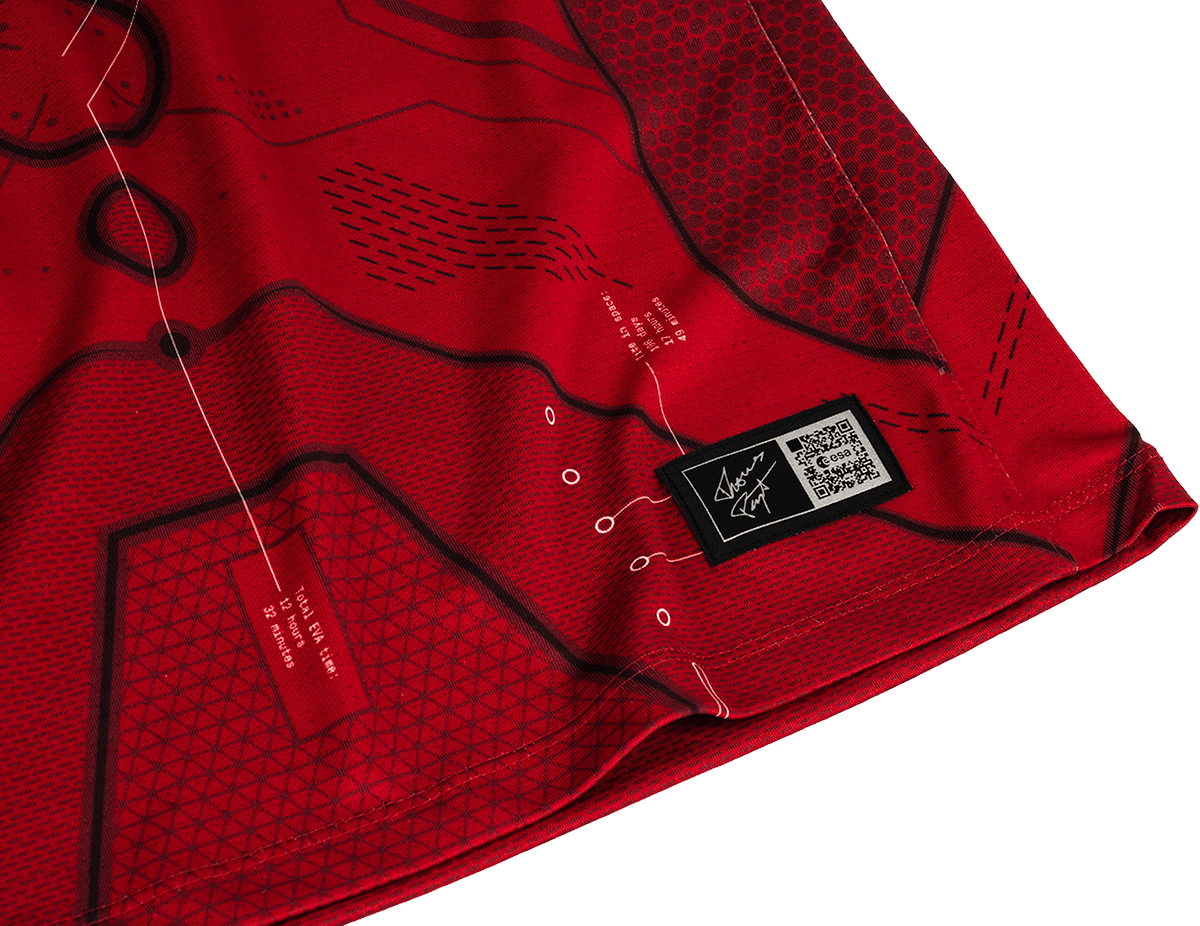
ESA
astronaut
Thomas Pesquet
has a message for you

Audio Message
Thomas Pesquet
ESA French Astronaut
Explore
the Proxima
mission
through
the
woven
into
the jersey

10th
French Astronaut
ESA astronaut Thomas Pesquet was the tenth French citizen to go to space and only the second to perform a long-duration flight.

Ladder
The ladder represents the heights Thomas and Toulouse have reached, especially the two spacewalks done by Thomas Pesquet outside the International Space Station. He did two spacewalks during Proxima to swap batteries, install hardware and replace cameras.

196 days
Thomas was launched on 17 November 2016 for the International Space Station kicking off his ESA six-month Proxima mission where he held the role of flight test engineer for Expeditions 50 and 51. He landed back on Earth on 2 June 2017 after 196 days in space.

Closest star
The « X » in the middle of the Proxima mission logo refers to the Proxima Centauri, the closest star to our Solar System.

Shooting stars
Astronauts on the International Space Station can observe meteors, also known as shooting stars. Made from over 250 photos, this short clip shows the beauty of our planet and the space surrounding it..
Stade Toulousain X ESA
ESA and sport, shared methods
Training
Astronauts and athletes in high-level competition share much in common. Before a mission, astronauts, like athletes before a game, train their body and mind to reach highest performance. Repeat, learn, repeat and improve, until failure is not an option to achieve the ultimate goal, the once-in-a-lifetime success.
Mental training
In such particuliar environments, even a fit and trained expert is vulnerable. When difficulties occur, when uncertainty spreads from a non-planned incident, the mind must take the lead to overcome the hardship. To support astronauts and athletes in their missions, ESA personell guide them in their psychic and mental training. Collective strenght is greater than the sum of individualities - the mental aspect of the preparation is essential to get everyone ready, at any time of the mission.
Data
Success, in space as in sports, depends on human and material factors. To reduce risk ESA collects and analyses data on our astronauts from preparation to the end of their missions. Toulouse staff records data with extreme precision on fatigue, effort, anxiety and awareness of the players. Immensely detailed work is done to master the data and find correlations. The use of DATA is necessary as it provides keys to improve preparation by analysing each detail.
Communication
The strong parallel between sports and space is also illustrated by how they bring people together. A space mission relies on teamwork and a successful mission is similar to a victory in sports, garnering huge interest from fans and followers. The achievements of human spaceflight are now accessible to the public and the public can identify with space ambassadors. The values of surpassing one’s own expectations through hard work and dreaming big are common to astronauts and athletes and the results can be broadcast anywhere on the planet – thanks to space technology.
Team work
An extended team of collaborators guide both astronauts and players to the field or the launch pad. A successful space mission or rugby club relies on diversity, multiple professions and cultures. ESA gathers professionals from its 22 Member States in fields as various as engineering, fitness, teaching and science to allow astronauts to work as efficiently as possible. CNES represents France in ESA programmes and gave Toulouse its prestigious Space Centre. It also collaborates with Stade Toulousain to monitor the players’ physical and psychological strength using technology based on space missions.















